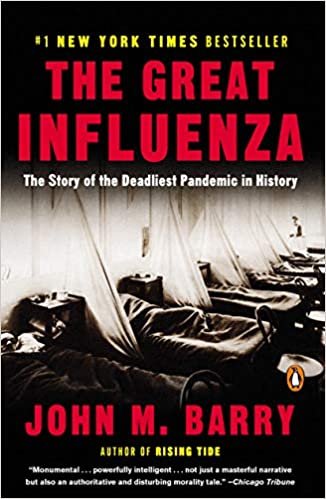by Local History Librarian David
Research for this article contributed by Scott King-Owen, Ph.D, Teacher, Bexley City Schools.
One month before the First World War ended a second wave of the deadly Spanish Influenza pandemic, initially spread in military encampments by troop movement, found its way into the civilian population of central Ohio. Like Covid-19, a century later, the absence of medicine for treatment or a vaccine for prevention necessitated avoiding crowds, through isolation or quarantine, to control spread of the respiratory virus.
By order of state health officials on October 11, 1918, all schools, colleges, churches, theatres, and places of public gathering in towns with populations of 3,000 or more were closed. Despite Bexley, only a decade old, having a population less than half of that requiring action, local officials followed suit with its more populous neighbor, Columbus.
Christ Lutheran Church suspended services for three weeks until the state allowed local officials to determine when to lift restrictions. Gathering for worship again required adequate ventilation, avoiding overcrowding, and those sick or with ill family members to stay home.
Drug stores including Stuckey Drug Store at the northeast corner of East Main Street and South Drexel Avenue, later renamed Wentz Drug Store, were permitted to remain open after 8:30 P. M. as long as they only sold drugs. All other retail businesses and restaurants were ordered to close early.
Closed just over a month, schools were permitted to open in mid November. However as cases increased and more students were absent most closed again by early December. The Bexley School Board elected to keep students out of the classroom until the new year.
At Capital University, young men uniformed and following military discipline had been housed at Loy Gymnasium, converted into barracks for the newly formed Student Army Training Corps. When the deadly influenza spread among their ranks the Bexley chapter of the local Red Cross stepped in to furnish and supply a hospital room on campus staffed by two trained nurses.
For one Bexley family the impact of the pandemic was particularly devastating, as Anna Schneider and her five children were all admitted to St. Anthony’s hospital ill with influenza. Only her husband Peter was spared and within one week the couple lost two daughters, Margaret, age 4, and Anna, 15 months old. Their deaths occurred in mid March of 1919 as the third and final wave of the pandemic dissipated.
From government orders, closures of schools, business, and churches and the need to avoid public gatherings and crowds the pandemic of 1918 was experienced in ways similar to that in 2020. Masks, the most effective way of preventing the spread of Spanish Influenza and Covid-19, came to symbolize both pandemics and just as gauze for face coverings was hard to find in 1918, personal protective equipment is in short supply today.
To learn more about the 1918 Spanish Influenza and today’s Covid-19 pandemic explore these titles recommended by Local History Librarian David Distelhorst:
- The Great Influenza: The Story of the Deadliest Pandemic in History by John M. Barry | print / digital
- America’s Forgotten Pandemic: The Influenza of 1918 by Alfred W. Crosby | print
- Pale Rider: the Spanish Flu of 1918 and How it Changed the World by Laura Spinney | print / digital
- COVID-19: The Pandemic that Never Should Have Happened and How to Stop the Next One by Debora Mackenzie | print
- How We Live Now: Scenes From the Pandemic by Bill Hayes | print




